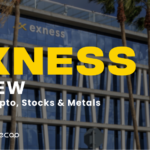Key Takeaways
- The decision came after members approved a new Treasury Framework, which aims to target a 75% stablecoin and 25% directional exposure breakdown instead of the previous 79%-21% breakdown.
- The proposal aims to decrease Olympus’ reliance on stablecoins with centralized backing while not undermining the stability of OHM’s backing in the near term.
The decentralized reserve crypto project Olympus DAO has decided to increase holdings of “volatile assets,” including ether (ETH) in the treasury backing its OHM token. This decision comes after the members approved a new Treasury Framework.
“Treasury team recognizes the need for Olympus to decrease reliance on stablecoins with centralized backing,” the proposal reads. “Increasing ETH exposure marginally is one step in that direction while not undermining the relative stability of OHM’s backing in the near term.”
According to Relwyn, an analyst at the Olympus treasury team, the new framework aims to target a 75% stablecoin and 25% directional exposure breakdown. This is a definitive shift from the 79%-21% breakdown, which includes Olympus’ $200 million treasury of stablecoins, volatile assets, and protocol-owned liquidity.
The move is expected to give Olympus more exposure to ether, which at $8.4 million on Friday was already the largest “volatile asset” in the reserve treasury backing OHM. The tweaking is also expected to result in a decrease in Olympus’ exposure to stablecoins such as DAI.
Launched in May 2021, OlympusDAO is a decentralized reserve currency protocol based on the OHM token. OHM tokens are backed by a plethora of assets, including DAI and FRAX, held in the Olympus treasury.
Since January 2022, Olympus has offered a potential maximum $3.3 million bounty focused on Olympus smart contracts and applications to prevent the loss of DAO funds.OlympusDAO’s vision is grand in the words of its pseudonymous founder, Zeus is that it wants to provide “the digital world with its own currency.”
Olympus DAO also came under fire last year after a price drop and liquidations, with many calling it a Ponzi scheme. Many users have called out Olympus earlier, accusing the protocol of using its liquidity protocols to enrich early entrants at the expense of latecomers.











